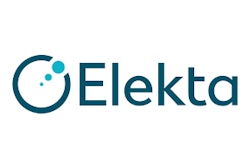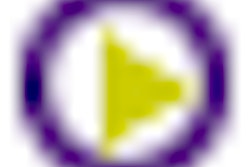





The surgical management of intracranial aneurysms and arteriovenous malformations (AVMs) by the application of aneurysm clips is a well-established procedure. The presence of an aneurysm clip in a patient referred for an MR procedure represents a situation that requires the utmost consideration because of the associated risks.
Classifications of clips
Certain types of intracranial aneurysm clips (e.g., those made from martensitic stainless steels such as 17-7PH or 405 stainless steel) are an absolute contraindication to the use of MR procedures because excessive, magnetically induced forces can displace these clips and cause serious injury or death.
By comparison, aneurysm clips classified as "nonferromagnetic" or "weakly ferromagnetic" (e.g., those made from Phynox, Elgiloy, austentitic stainless steels, titanium alloy, or commercially pure titanium) are safe for patients undergoing MR procedures. Reports in the peer-reviewed literature have indicated that MR procedures have been conducted safely in patients with certain nonferromagnetic aneurysm clips using MR systems that ranged from 0.35 to 1.5 Tesla.
Of note is that only a single fatality has been reported due to the presence of a ferromagnetic aneurysm clip in a patient preparing to undergo an MR procedure. According to the report, the patient involved in this incident complained of a headache at a distance of approximately 1.2 meters from the magnet bore, indicating that the translational attraction force associated with the spatial gradient component of the magnetic field was responsible for dislodgment of the aneurysm clip.
This unfortunate incident was the result of erroneous information pertaining to the type of aneurysm clip used in the patient. That is, the clip was thought to be a nonferromagnetic Yasargil aneurysm clip (Aesculap Inc., South San Francisco, CA) and turned out to be a ferromagnetic Vari-Angle clip (Codman & Shurtleff, Randolf, MA).
There has never been a report of an injury to a patient or individual in the MR environment related to the presence of an aneurysm clip made from a nonferromagnetic or weakly ferromagnetic material.
In fact, there have been cases in which patients with ferromagnetic aneurysm clips (based on the extent of the artifact seen during MR imaging or other information) have undergone MR procedures at 1.5 T without any injuries (personal communications, D. Kroker, 1995 and E. Kanal, 1996).
Unfortunately, there is much controversy and confusion regarding the amount of ferromagnetism that needs to be present in an aneurysm clip to constitute a hazard for a patient in the MR environment. Consequently, this issue has not only created problems for MR healthcare workers but for manufacturers of aneurysm clips, as well.
How to evaluate aneurysm clips
The "deflection angle test," originally described by New et al., has been indicated for the specific evaluation of aneurysm clips (draft document entitled, Guidance for Testing MR Interaction with Aneurysm Clips, U.S. Department of Health and Human Services, Food and Drug Administration, Center for Devices and Radiological Health, 1996).
The deflection angle test is considered to be a useful, reliable, and reproducible test and has been utilized for over 15 years to assess magnetic-induced translational forces for many metallic objects.
In 1994, a standard issued from the American Society for Testing and Materials (ASTM) for the requirements and disclosure of aneurysm clips indicated that the deflection angle test should be used to specifically evaluate aneurysm clips.
The ASTM report states that the operational definition of a nonferromagnetic aneurysm clip is met only if the clip passes the following test: "The clip is suspended at the end of a string and held stationary in the vertical direction (that is, perpendicular to the ground) while it is placed in position at the portal of the imaging magnet. Following release of the clip, the deflection of the string from the vertical is then observed. The magnetic force is less than the gravitational force (that is, the clip's weight) if the deflection of the string with respect to the vertical is less than 45 degrees. The clip is then judged to be nonferromagnetic and suitable for implantation."
Although not specified by the ASTM, for most MR systems with a conventional design, the highest spatial gradient is likely to exist somewhere between 30 and 45 cm inside of the bore of the magnet. Therefore, it is at this position that the deflection angle test should be conducted. Additionally, it is recommended that a specific length (e.g., 30 cm in length) of thin thread or similar material be used for the test procedure.
Other testing methods, particularly if they are more subjective or insensitive (e.g., testing clips on a flat plate) will not yield the type of information that is required to adequately determine if an aneurysm clip will present a risk to a patient in the MR environment.
Recommendations for handling patients 
In view of the current knowledge pertaining to aneurysm clips, the following guidelines are recommended for careful consideration prior to performing an MR procedure in a patient with an aneurysm clip or before allowing an individual with an aneurysm clip into the MR environment:
1. Specific information (i.e., manufacturer, type or model, material, lot and serial numbers) about the aneurysm clip must be known, especially with respect to the material used to make the aneurysm clip, so that only patients or individuals with nonferromagnetic or weakly ferromagnetic clips are allowed into the MR environment. This information is provided in the labeling for the aneurysm clip by the manufacturer. The implanting surgeon is responsible for properly communicating this information in the patient's or individual's records.
2. An aneurysm clip that is in its original package and made from Phynox, Elgiloy, MP35N, titanium alloy, commercially pure titanium or other material known to be nonferromagnetic or weakly ferromagnetic does not need to be evaluated for ferromagnetism. Aneurysm clips made from nonferrromagnetic or weakly ferromagnetic materials in original packages do not require testing of ferromagnetism because the manufacturers ensure the pertinent MR safety aspects of these clips and, therefore, should be held responsible for the accuracy of the labeling.
3. If the aneurysm clip isn't in its original package and properly labeled, it should undergo testing for magnetic field interaction.
4. Testing for magnetic field interaction should first involve a procedure like the Petri dish test (i.e., for one or a few aneurysm clips) or the procedure described by Kanal et al. (i.e., for screening large numbers of aneurysm clips). If a positive test result is noted using one of these test techniques, then the deflection angle test should be conducted following the guidelines of the ASTM.
5. The radiologist and implanting surgeon should be responsible for evaluating the available information pertaining to the aneurysm clip, verifying its accuracy, obtaining written documentation and deciding to perform the MR procedure after considering the risk vs. benefit aspects for a given patient.
Effects of long-term multiple exposures 
A concern that has recently emerged is that there are potential alterations in the magnetic properties of pre-or post-implanted aneurysm clips resulting from long-term or multiple exposures to strong magnetic fields.
It has been suggested, or at least theorized, that long-term or multiple exposures to strong magnetic fields (such as those associated with MR imaging systems) may grossly "magnetize" aneurysm clips, even if they are made from nonferromagnetic or weakly ferromagnetic materials.
Obviously, this scenario would present a significant hazard to an individual in the MR environment. Therefore, an investigation was conducted to study intracranial aneurysm clips in vitro prior to and following long-term and multiple exposures to the magnetic fields associated with a 1.5 Tesla MR system. Aneurysm clips made from Elgiloy, Phynox, titanium alloy, commercially pure titanium, and austenitic stainless steel were tested in association with long-term and multiple exposures to the strong magnetic fields associated with 1.5 Tesla MR systems. The findings indicated there was a lack of response to the various magnetic field exposure conditions that were used, such that long-term and/or multiple exposures to diagnostic MR examinations or of in vitro clips to MR systems for testing purposes should not result in clinically significant changes in their magnetic properties or assessments of their MRI safety.
Artifacts associated with aneurysm clips 
An additional problem related to aneurysm clips is that artifacts produced by these metallic implants may substantially detract from the diagnostic aspects of MR procedures.
Five different aneurysm clips made from five different materials were evaluated in this investigation, as follows:
(1) Yasargil, Phynox (Aesculap, Inc., South San Francisco, CA),
(2) Yasargil, titanium alloy (Aesculap, Inc., South San Francisco, CA),
(3) Sugita, Elgiloy (Mizuho American, Inc., Beverly, MA),
(4) Spetzler Titanium Aneurysm Clip, commercially pure titanium (Elekta Instruments, Inc., Atlanta, GA), and
(5) Perneczky, cobalt alloy (Zepplin Chirurgishe Instrumente, Pullach, Germany).
The MRI artifact testing revealed that the size of the signal voids were directly related to the type of material used to make the particular clip. Arranged in increasing order of artifact size, the materials responsible for the artifacts associated with the aneurysm clips were, as follows: Elgiloy (Sugita), cobalt alloy (Perneczky), Phynox (Yasargil), titanium alloy (Yasargil), and commercially pure titanium (Spetzler) (the artifacts for titanium alloy and commercially pure titanium were approximately the same).
These results have implications when one considers the various critical factors that are responsible for the decision to use a particular type of aneurysm clip (e.g., size, shape, closing force, corrosion resistance, material-related effects on diagnostic imaging examinations, etc.).
References
Becker RL, Norfray JF, Teitelbaum GP, et al. MR imaging in patients with intracranial aneurysm clips. Am J Roentgenol 1988; 9:885-889.
Dujovny M, Kossovsky N, Kossowsky R, et al. Aneurysm clip motion during magnetic resonance imaging: in vivo experimental study with metallurgical factor analysis. Neurosurgery 1985;17:543-548.
FDA stresses the need for caution during MR scanning of patients with aneurysm clips. In: Medical Devices Bulletin, Center for Devices and Radiological Health. March, 1993;11:1-2.
Kanal E, Shellock FG. Aneurysm clips: effects of long-term and multiple exposures to a 1.5 Tesla MR system. Radiology. 1999;210:563-565.
Kanal E, Shellock FG, Lewin JS. Aneurysm clip testing for ferromagnetic properties: clip variability issues. Radiology 1996;200:576-578.
Klucznik RP, Carrier DA, Pyka R, Haid RW. Placement of a ferromagnetic intracerebral aneurysm clip in a magnetic field with a fatal outcome. Radiology 1993; 187:855-856.
New PFJ, Rosen BR, Brady TJ, et al. Potential hazards and artifacts of ferromagnetic and nonferromagnetic surgical and dental materials and devices in nuclear magnetic resonance imaging. Radiology 1983;147:139-148.
Shellock FG. Guide to MR Procedures and Metallic Objects: Update 2000. Sixth Edition, Lippincott Williams & Wilkins Healthcare, Philadelphia, 2000.
Shellock FG, Crues JV. Aneurysm clips: Assessment of magnetic field interaction associated with a 0.2-T extremity MR system. Radiology 1998; 208:407-409.
Shellock FG, Kanal E. Aneurysm clips: Evaluation of MR imaging artifacts at 1.5 Tesla. Radiology. 1998;209:563-566.
Shellock FG, Kanal E. Yasargil aneurysm clips: evaluation of interactions with a 1.5 Tesla MR system. Radiology 1998;207:587-591.
Shellock FG, Shellock VJ. MR-compatibility evaluation of the Spetzler titanium aneurysm clip. Radiology 1998;206:838-841.
About the author 














